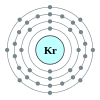Period 4 element
| Period 4 in the periodic table | ||||||||||||||||||||||||||||||||||||||||||||||||||||||||||||||||||||||||||||||||||||||||||||||||||||||||||||||||||||||||||||||||||||||||||||||||||||||||||||||||||||||||||||||||||||||||||||||||||||||||||||||||||||||||||||||||
| | ||||||||||||||||||||||||||||||||||||||||||||||||||||||||||||||||||||||||||||||||||||||||||||||||||||||||||||||||||||||||||||||||||||||||||||||||||||||||||||||||||||||||||||||||||||||||||||||||||||||||||||||||||||||||||||||||
| Part of a series on the | |
| Periodic table | |
|---|---|
|
by other characteristics: |
|
|
|
|
Data pages for elements
|
|
|
|
A period 4 element is one of the chemical elements in the fourth row (or period) of the periodic table of the elements. The periodic table is laid out in rows to illustrate recurring (periodic) trends in the chemical behaviour of the elements as their atomic number increases: a new row is begun when chemical behaviour begins to repeat, meaning that elements with similar behaviour fall into the same vertical columns. The fourth period contains 18 elements, beginning with potassium and ending with krypton. As a rule, period 4 elements fill their 4s shells first, then their 3d and 4p shells, in that order; however, there are exceptions, such as chromium.
Properties
Every single one of these elements is stable,[1] and many are extremely common in the earth's crust and/or core; it is the last period with no unstable elements at all. Many of the transition metals in period 4 are incredibly strong, and therefore commonly used in industry, especially iron. Copper is one of three metals that are not silver or gray in color, along with caesium and gold. Three adjacent elements are known to be toxic, with arsenic one of the most well-known poisons, selenium being toxic to humans in large quantities, and bromine, a very toxic liquid. Many elements are essential to humans' survival, such as calcium being what forms bones.[2]
Periodic trends
List of elements
Chemical element Chemical series Electron configuration 19 K Potassium Alkali metal [Ar] 4s1 20 Ca Calcium Alkaline earth metal [Ar] 4s2 21 Sc Scandium Transition metal [Ar] 3d1 4s2 22 Ti Titanium Transition metal [Ar] 3d2 4s2 23 V Vanadium Transition metal [Ar] 3d3 4s2 24 Cr Chromium Transition metal [Ar] 3d5 4s1 (*) 25 Mn Manganese Transition metal [Ar] 3d5 4s2 26 Fe Iron Transition metal [Ar] 3d6 4s2 27 Co Cobalt Transition metal [Ar] 3d7 4s2 28 Ni Nickel Transition metal [Ar] 3d8 4s2 29 Cu Copper Transition metal [Ar] 3d10 4s1 (*) 30 Zn Zinc Transition metal [Ar] 3d10 4s2 31 Ga Gallium Post-transition metal [Ar] 3d10 4s2 4p1 32 Ge Germanium Metalloid [Ar] 3d10 4s2 4p2 33 As Arsenic Metalloid [Ar] 3d10 4s2 4p3 34 Se Selenium Polyatomic nonmetal [Ar] 3d10 4s2 4p4 35 Br Bromine Diatomic nonmetal [Ar] 3d10 4s2 4p5 36 Kr Krypton Noble gas [Ar] 3d10 4s2 4p6
(*) Exception to the Madelung rule
| Legend for the background color |
s-block elements
Potassium

Potassium (K) is an alkali metal, placed under sodium and over rubidium, and is the first element of period 4.[3] It is one of the most reactive elements in the periodic table, therefore usually only found in compounds. It tends to oxidize in air very rapidly, thus accounting for its rapid reaction with oxygen when freshly exposed to air. When freshly exposed, it is rather silvery, but it quickly begins to tarnish as it reacts with air. It is soft enough to be cut with a knife and it is the second least dense element.[4] Potassium has a relatively low melting point; it will melt just by putting it under a small open flame.[5] It also is less dense than water, and can, in turn, float.[6]
Calcium
Calcium (Ca) is the second element in period 4, between potassium and scandium. An alkali earth metal, calcium is almost never found in nature due to its high reactivity with water.[7] It has one of the most widely known and acknowledged biological roles in all animals and some plants, making up bones and teeth, and used in some applications in cells, such as signals for cellular processeses. It is regarded as the most abundant mineral in the body's mass.[8]
d-block elements
Scandium
Scandium (Sc) is the third element in period 4, between calcium and titanium, and is the first transition metal in the periodic table. Scandium is quite common in nature, but difficult to find because it is most prevalent in rare earth compounds, which are difficult to isolate elements from. Scandium has very few commercial applications because of the aforementioned facts, and currently its only major application is in aluminium alloys.
Titanium
Titanium (Ti) is an element in period 4, between scandium and vanadium. Titanium is both one of the least dense metals and one of the strongest and most corrosion-resistant, and as such has many applications, especially in alloys with other elements, such as iron. Due to its aforementioned properties, it is commonly used in airplanes, golf clubs, and other objects that must be strong, but lightweight.
Vanadium
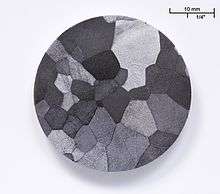
Vanadium (V) is an element in period 4, between titanium and chromium. Vanadium is never found in pure form in nature, but is commonly found in compounds. Vanadium is similar to titanium in many ways, such as being very corrosion-resistant, however, unlike titanium, it oxidizes in air even at room temperature. All vanadium compounds have at least some level of toxicity, with some of them being extremely toxic.
Chromium
Chromium (Cr) is an element in period 4, between vanadium and manganese. Chromium is, like titanium and vanadium before it, extremely resistant to corrosion, and is indeed one of the main components of stainless steel. Chromium also has many colorful compounds, and as such is very commonly used in pigments, such as chrome green.
Manganese
Manganese (Mn) is an element in period 4, between chromium and iron. Manganese is often found free in nature, but is also found in combination with iron. Manganese, like chromium before it, is an important component in stainless steel, preventing the iron from rusting. Manganese is also often used in pigments, again like chromium. Manganese is also poisonous; if enough is inhaled, it can cause irreversible neurological damage.
Iron
Iron (Fe) is an element in period 4, between manganese and cobalt. Iron is probably the most well-known element in period 4, being the most common element in the earth and a major component of steel. Iron-56 has the lowest energy density of any isotope of any element, meaning that it is the most massive element that can be produced in supergiant stars. Iron also has some applications in the human body; hemoglobin is partly iron.
Cobalt

Cobalt (Co) is an element in period 4, between iron and nickel. Cobalt is commonly used in pigments, as many compounds of cobalt are blue in color. Cobalt is also a core component of many magnetic and high-strength alloys. The only stable isotope, cobalt-59, is an important component of vitamin B-12, while cobalt-60 is a component of nuclear fallout and can be dangerous in large enough quantities due to its radioactivity.
Nickel
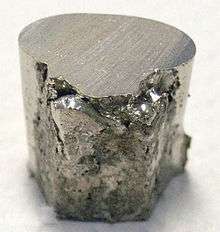
Nickel (Ni) is an element in period 4, between cobalt and copper. Nickel is rare in the earth's crust, mainly due to the fact that it reacts with oxygen in the air, with most of the nickel on earth coming from nickel iron meteorites. However, nickel is incredibly common in the earths core; along with iron it is one of the two main components. Nickel is an important component of stainless steel, and in many superalloys.
Copper
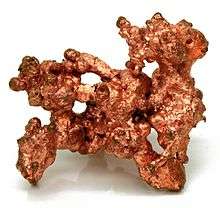
Copper (Cu) is an element in period 4, between nickel and zinc. Copper is one of the few metals that is not white or gray in color, the only others being gold and caesium. Copper has been used by humans for thousands of years to provide a reddish tint to many objects, and is even an essential nutrient to humans, although too much is poisonous. Copper is also commonly used as a wood preservative or fungicides.
Zinc
Zinc (Zn) is an element in period 4, between copper and gallium. Zinc is one of the main components of brass, being used since the 10th century BCE. Zinc is also incredibly important to humans; almost 2 billion people in the world suffer from zinc deficiency. However, too much zinc can cause copper deficiency. Zinc is often used in batteries, aptly named carbon-zinc batteries, and is important in many platings, as zinc is very corrosion resistant.
p-block elements
Gallium

Gallium (Ga) is an element in period 4, between zinc and germanium. Gallium is noteworthy because it has a melting point at about 303 Kelvin, right around room temperature. For example, it will be solid on a typical spring day, but will be liquid on a hot summer day. Gallium is an important component in the alloy galinstan, along with tin. Gallium can also be found in semiconductors.
Germanium

Germanium (Ge) is an element in period 4, between gallium and arsenic. Germanium, like silicon above it, is an important semiconductor and is commonly used in diodes and transistors, often in combination with arsenic. Germanium is fairly rare on earth, leading to its comparatively late discovery. Germanium, in compounds, can sometimes irritate the eyes, skin, or lungs.
Arsenic
Arsenic (As) is an element in period 4, between germanium and selenium. Arsenic, as mentioned above, is often used in semiconductors in alloys with germanium. Arsenic, in pure form and some alloys, is incredibly poisonous to all multicellular life, and as such is a common component in pesticides. Arsenic was also used in some pigments before its toxicity was discovered.
Selenium
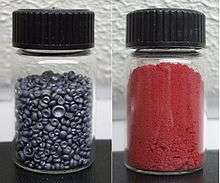
Selenium (Se) is an element in period 4, between arsenic and bromine. Selenium is the first nonmetal in period 4, with properties similar to sulfur. Selenium is quite rare in pure form in nature, mostly being found in minerals such as pyrite, and even then it is quite rare. Selenium is necessary for humans in trace amounts, but is toxic in larger quantities.
Bromine
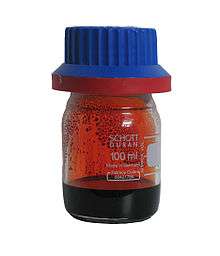
Bromine (Br) is an element in period 4, between selenium and krypton. Bromine is a halogen, never existing in pure form in nature. Bromine is barely liquid at room temperature, boiling at about 330 Kelvin. Bromine is also quite toxic and corrosive, but bromide ions, which are relatively inert, can be found in halite, or table salt. Bromine is often used as a fire retardant because many compounds can be made to release free bromine atoms.
Krypton
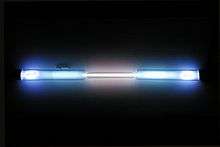
Krypton (Kr) is a noble gas, placed under argon and over xenon. Being a noble gas, krypton rarely interacts with itself or other elements; although compounds have been detected, they are all unstable and decay rapidly, and as such, krypton is often used in fluorescent lights. Krypton, like most noble gases, is also used in lighting because of its many spectral lines and the aforementioned reasons.
References
- ↑ "List of Elements of the Periodic Table – Sorted by Abundance in Earth's crust". Science.co.il. Retrieved 2012-08-14.
- ↑ Gray, Theodore (2009). The Elements: A Visual Exploration of Every Known Atom in the Universe. New York: Black Dog & Leventhal Publishers. ISBN 978-1-57912-814-2.
- ↑ "Elements in the Modern Periodic Table, Periodic Classification of Elements". Tutorvista.com. Retrieved 2012-08-14.
- ↑ "It's Elemental – The Element Potassium". Education.jlab.org. Retrieved 2012-08-14.
- ↑ "Potassium, Chemical Element – Overview, Discovery and naming, Physical properties, Chemical properties, Occurrence in nature, Isotopes". Chemistryexplained.com. Retrieved 2012-08-14.
- ↑ "Potassium (K) – Chemical properties, Health and Environmental effects". Lenntech.com. Retrieved 2012-08-14.
- ↑ "Reactions of the Group 2 elements with water". Chemguide.co.uk. Retrieved 2012-08-14.
- ↑ "Chapter 11. Calcium". Fao.org. Retrieved 2012-08-14.
| Periodic table (Large cells) | |||||||||||||||||||||||||||||||||
|---|---|---|---|---|---|---|---|---|---|---|---|---|---|---|---|---|---|---|---|---|---|---|---|---|---|---|---|---|---|---|---|---|---|
| 1 | 2 | 3 | 4 | 5 | 6 | 7 | 8 | 9 | 10 | 11 | 12 | 13 | 14 | 15 | 16 | 17 | 18 | ||||||||||||||||
| 1 | H | He | |||||||||||||||||||||||||||||||
| 2 | Li | Be | B | C | N | O | F | Ne | |||||||||||||||||||||||||
| 3 | Na | Mg | Al | Si | P | S | Cl | Ar | |||||||||||||||||||||||||
| 4 | K | Ca | Sc | Ti | V | Cr | Mn | Fe | Co | Ni | Cu | Zn | Ga | Ge | As | Se | Br | Kr | |||||||||||||||
| 5 | Rb | Sr | Y | Zr | Nb | Mo | Tc | Ru | Rh | Pd | Ag | Cd | In | Sn | Sb | Te | I | Xe | |||||||||||||||
| 6 | Cs | Ba | La | Ce | Pr | Nd | Pm | Sm | Eu | Gd | Tb | Dy | Ho | Er | Tm | Yb | Lu | Hf | Ta | W | Re | Os | Ir | Pt | Au | Hg | Tl | Pb | Bi | Po | At | Rn | |
| 7 | Fr | Ra | Ac | Th | Pa | U | Np | Pu | Am | Cm | Bk | Cf | Es | Fm | Md | No | Lr | Rf | Db | Sg | Bh | Hs | Mt | Ds | Rg | Cn | Nh | Fl | Mc | Lv | Ts | Og | |
|
| |||||||||||||||||||||||||||||||||
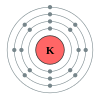
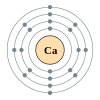


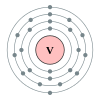
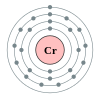
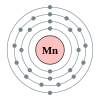
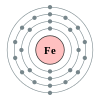
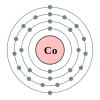
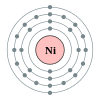
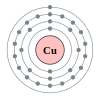
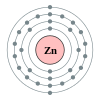
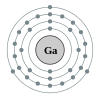
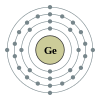
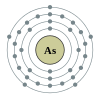
_-_no_label.svg.png)
_-_no_label.svg.png)
